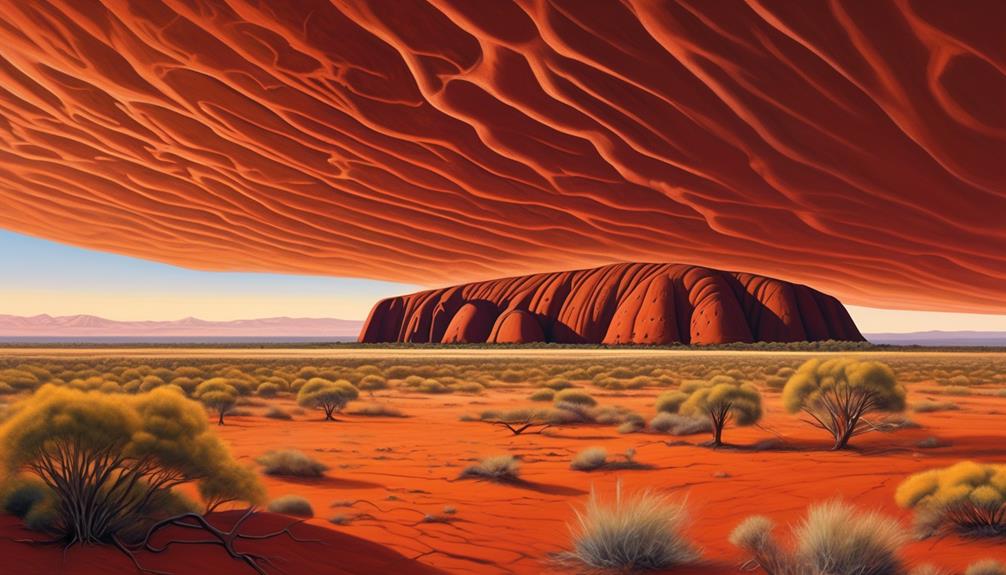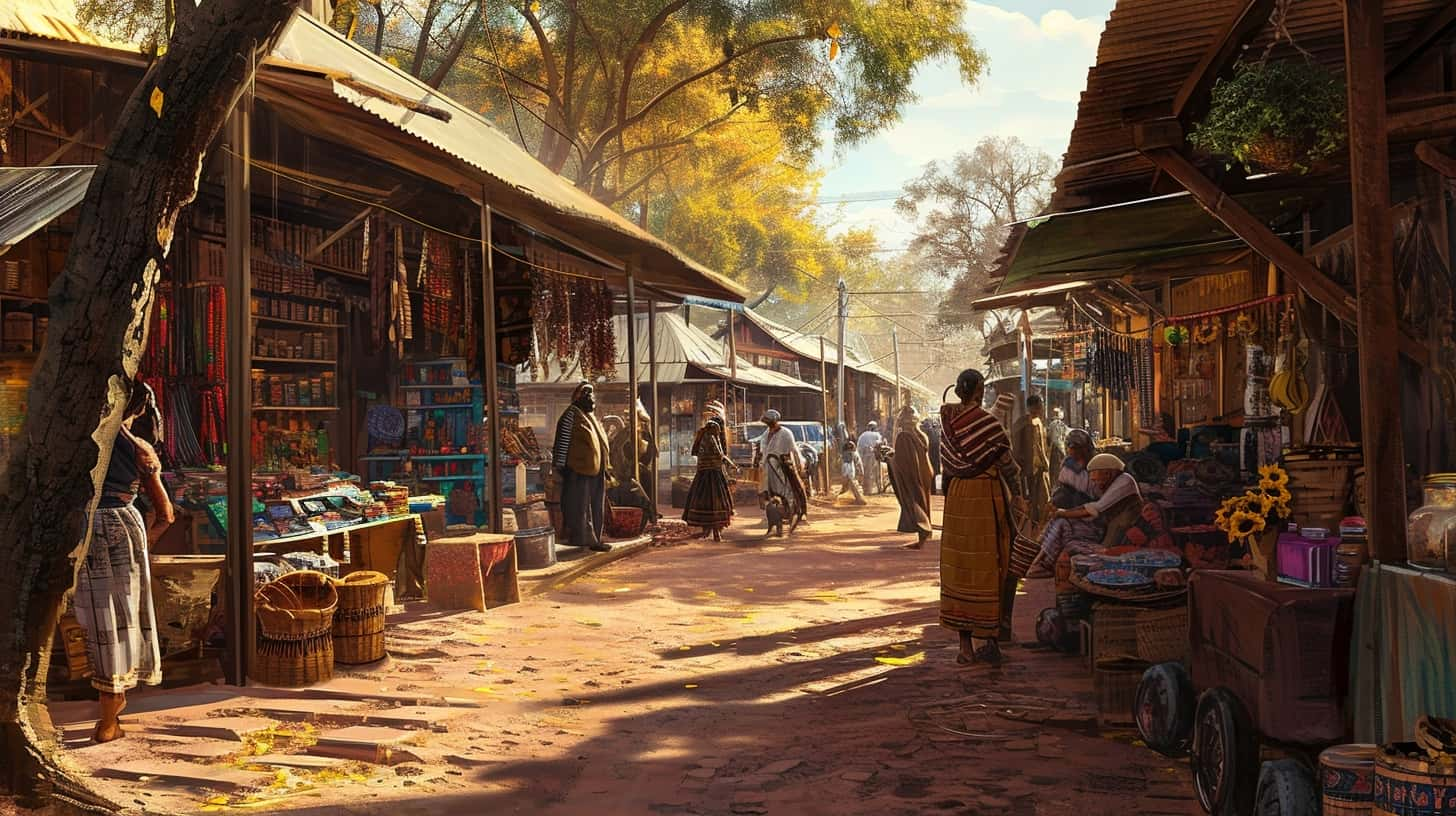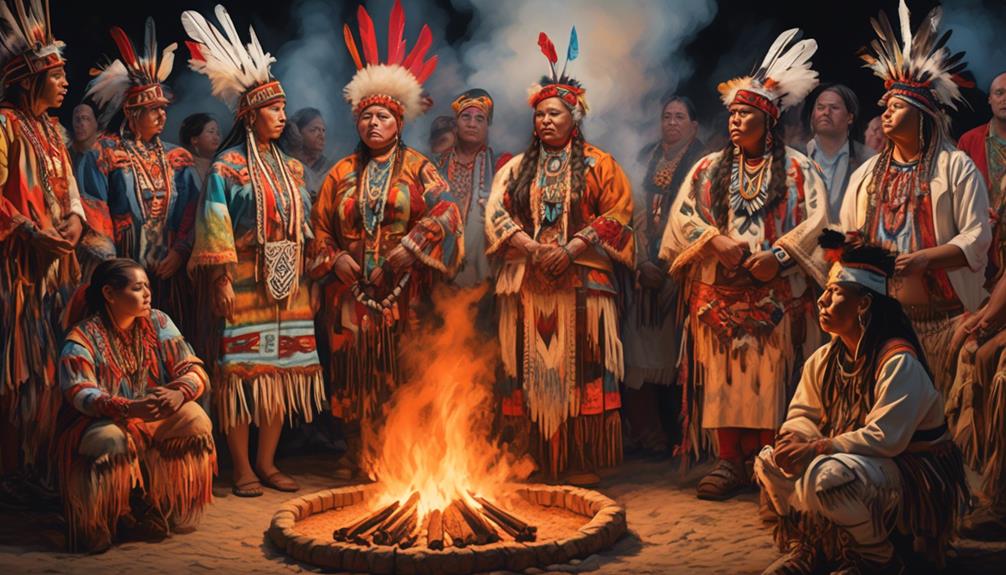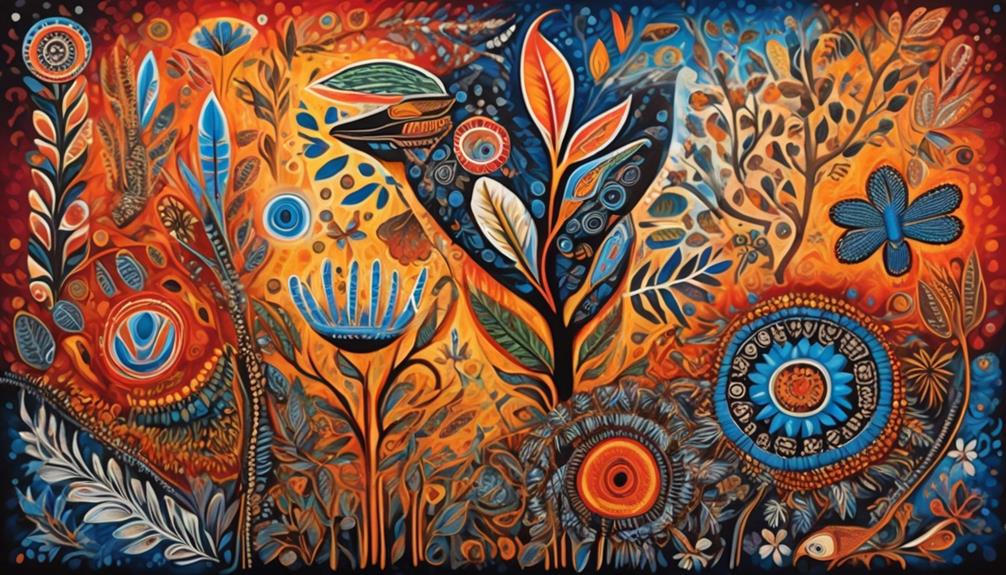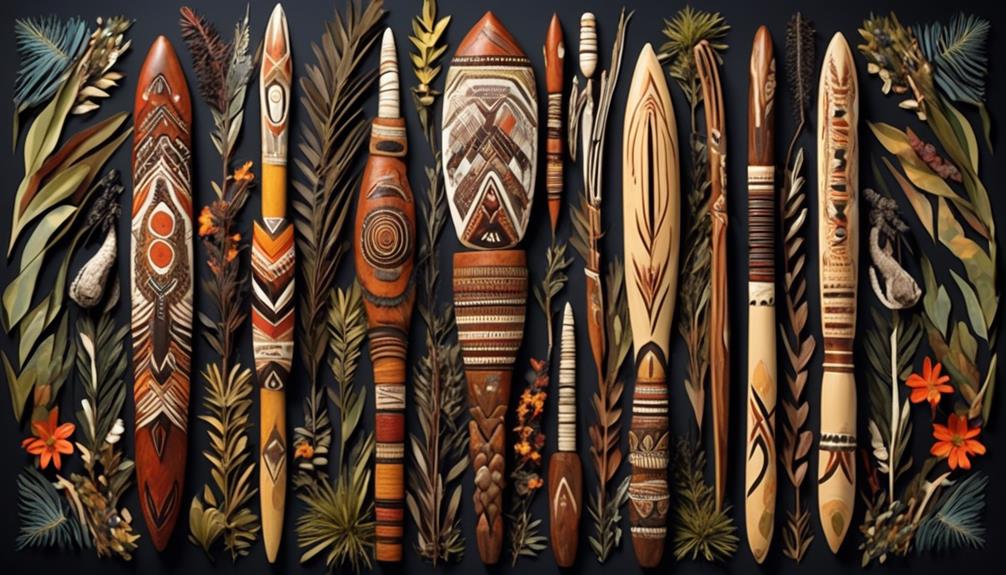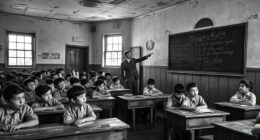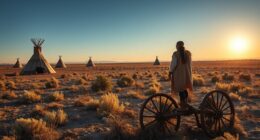Standing at the foot of Uluru, the famous sandstone formation in Australia’s Northern Territory, it is impossible not to be touched by its significant cultural significance. This stunning natural wonder holds great reverence among Australia’s indigenous people, representing the deep spiritual connection they have with their traditional territories.
However, there's much more to this ancient site than meets the eye. Its rich history, spiritual beliefs, and ongoing conservation efforts paint a vivid picture of the profound reverence the Aboriginal community holds for this natural wonder. Its impact on both the past and the present is a compelling narrative that begs exploration.
Key Takeaways
- Uluru, also known as Ayers Rock, is a sacred site for Australia's Aboriginal people.
- The site holds deep cultural and spiritual significance, with a connection to ancestral stories and ancient rock art.
- It serves as a focal point for ceremonies and rituals, bridging the physical and spiritual realms.
- Preservation of Uluru and other sacred sites is crucial for maintaining Aboriginal culture, identity, and traditional beliefs.
Uluru: An Iconic Landmark
Uluru, also known as Ayers Rock, stands as an iconic landmark in the heart of Australia's Red Centre, captivating visitors with its sheer size and cultural significance to the Aboriginal people. This massive sandstone rock formation rises abruptly from the surrounding flat desert plains, creating a mesmerizing sight that has held spiritual importance for the Anangu, the Indigenous people of the area, for thousands of years.
The sheer presence of Uluru is awe-inspiring; its terracotta hue morphs with the shifting sunlight, casting a spellbinding glow over the surrounding landscape.
The rock holds great significance in Aboriginal traditions and Indigenous spirituality. For the Anangu, Uluru isn't just a natural wonder, but a place deeply woven into their ancestral stories and spiritual beliefs. The caves and fissures of Uluru are adorned with ancient rock art, depicting the Dreamtime stories of creation and morality that form the foundation of Aboriginal culture. The formation is a living cultural landscape, embodying the Tjukurpa, the traditional law that governs all aspects of Anangu life.
As visitors stand in the presence of this colossal monolith, they're enveloped in the energy of a place where the spiritual and natural worlds intertwine, offering a profound insight into the depth and resilience of Indigenous traditions.
Uluru's immense physical presence and spiritual significance make it a place of deep reverence and respect, not only for the Anangu but for all who visit. It stands as a testament to the enduring strength of Aboriginal culture and the profound connection between the land and its traditional custodians.
Aboriginal Cultural Significance
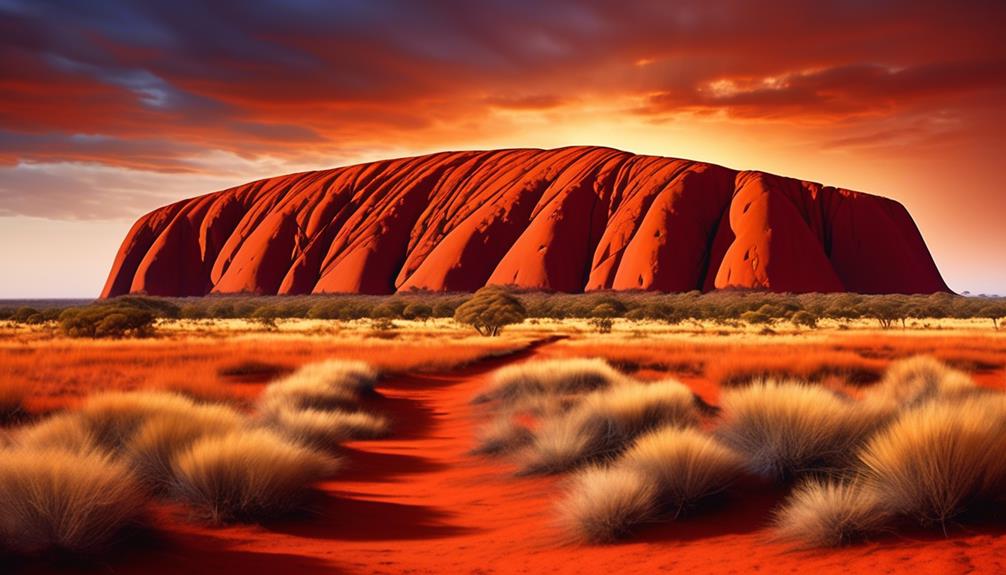
The Aboriginal cultural significance of this sacred site is deeply intertwined with their ancestral stories and spiritual beliefs, shaping a profound connection to the land that has endured for thousands of years. The traditions and cultural heritage of the Aboriginal people are intricately woven into the fabric of this sacred site, creating a rich tapestry of spiritual significance and historical importance. It serves as a living testament to the deep connection that Aboriginal people have with the land, carrying with it the stories of their ancestors and the wisdom of their elders.
| Aboriginal Cultural Significance | |
|---|---|
| Deep connection to ancestral stories | |
| Spiritual significance | |
| Historical importance | |
| Preservation of traditions | |
| Respect for cultural heritage |
The cultural significance of this sacred site extends beyond its physical presence, encompassing the intangible elements that make it a vital part of the Aboriginal identity. It is a place where traditions are upheld, where stories are passed down through generations, and where the cultural heritage of the Aboriginal people is revered. The site stands as a testament to the resilience and enduring spirit of the Aboriginal community, serving as a reminder of the importance of preserving and respecting their cultural traditions.
Spiritual Beliefs and Practices
Deeply rooted in the spiritual beliefs and practices of Australia's Aboriginal people, the sacred site holds a profound significance that transcends its physical presence. For Aboriginal communities, the site isn't merely a physical location but a spiritual connection to their ancestral teachings and the essence of their existence.
The spiritual beliefs and practices surrounding the site are rich and complex, intertwining with the very fabric of Aboriginal identity.
The sacred site is deeply entwined with ancestral teachings, carrying the wisdom and knowledge passed down through generations. It serves as a living testament to the spiritual connection that Aboriginal people have with the land, the ancestors, and the natural world. The site is a focal point for ceremonies, rituals, and storytelling, where spiritual practices are observed and ancestral wisdom is imparted.
Aboriginal spiritual beliefs and practices are deeply intertwined with the land, encompassing the understanding that the land isn't just physical, but spiritual and alive. The sacred site serves as a bridge between the physical and spiritual realms, where the Aboriginal people commune with their ancestors and the spiritual forces that govern the natural world.
The significance of the sacred site in Aboriginal spiritual beliefs and practices can't be overstated. It's a place where the past, present, and future converge, where the spiritual and physical worlds unite, and where the essence of Aboriginal identity is perpetuated through the preservation of ancestral teachings and the nurturing of spiritual connection.
Ancient History and Legends
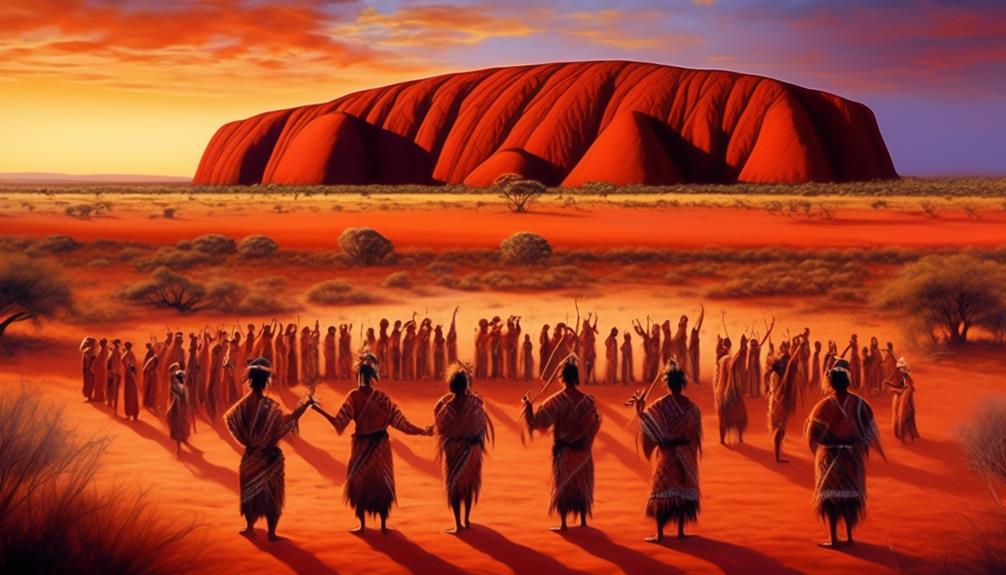
Ancient history and legends intertwine with the spiritual beliefs and practices of Australia's Aboriginal people, shaping a rich tapestry of cultural heritage and ancestral wisdom. The ancient traditions of the Aboriginal people are deeply rooted in the Dreamtime stories, which are the oral traditions that have been passed down through generations.
These stories aren't merely myths or fables; they're a vital part of the Aboriginal people's identity, and they hold the key to understanding their ancient history and legends.
The Dreamtime stories are a complex and intricate web of tales that explain the creation of the world, the birth of the land, and the emergence of the first people. They're a blend of history, mythology, and spiritual beliefs that provide a profound insight into the Aboriginal people's connection to the land and their profound respect for the natural world.
These stories aren't just a collection of myths; they're the foundation of the Aboriginal people's cultural identity and their understanding of the world around them.
Furthermore, the Dreamtime stories serve as a guide for ethical and moral behavior, shaping the Aboriginal people's understanding of their place in the world and their relationships with one another.
These ancient traditions and legends aren't relics of the past; they continue to influence and shape the lives of the Aboriginal people today, serving as a constant reminder of their rich cultural heritage and spiritual connection to the land.
Connection to the Land
Inextricably intertwined with our cultural identity and spiritual beliefs, our connection to the land holds a profound significance in shaping our understanding of the world and our place within it. For us, land ownership goes beyond mere possession; it is a sacred responsibility that has been passed down through countless generations. Our indigenous rights are deeply rooted in the land, serving as a foundation for our cultural heritage and identity.
| Land Ownership | Indigenous Rights | Environmental Stewardship |
|---|---|---|
| Sacred duty to care for the land | Connection to ancestral territories | Traditional ecological knowledge |
| Intergenerational transfer of land | Recognition of native title rights | Sustainable resource management |
| Land as a source of spiritual sustenance | Protection of cultural landscapes | Conservation of biodiversity |
Our environmental stewardship is guided by a deep understanding of the natural world, derived from centuries of lived experience. It encompasses the sustainable management of resources, preservation of biodiversity, and the protection of cultural landscapes. Our approach is not only about conservation but also about maintaining a harmonious relationship with the land.
Our connection to the land is a living embodiment of our cultural values and spirituality, shaping our identity and providing us with a sense of belonging. It underpins our existence and is integral to our way of life. As custodians of the land, we carry the responsibility of preserving its integrity for future generations.
Conservation Efforts and Preservation
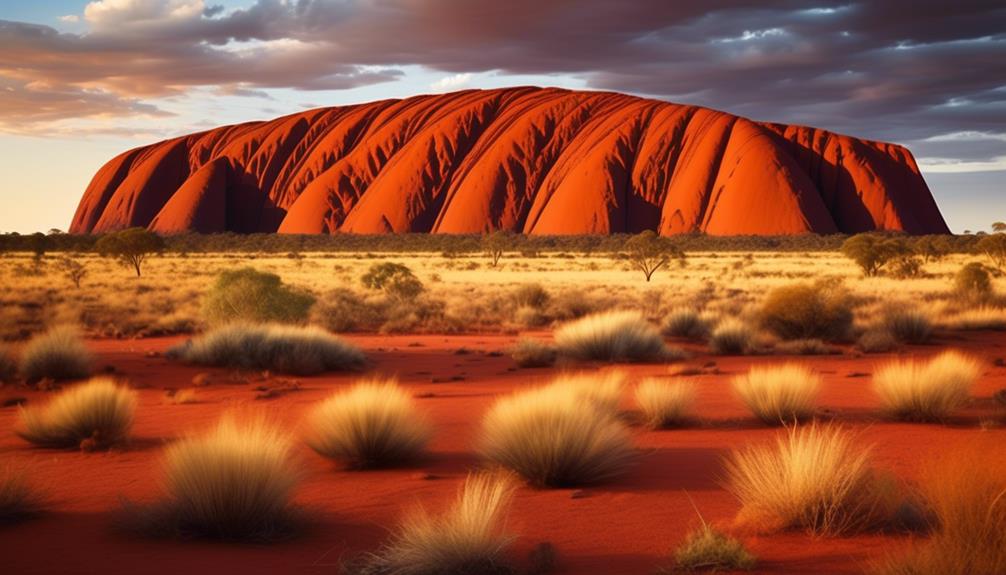
As custodians of the land, we actively engage in conservation efforts and preservation to safeguard the integrity of our ancestral territories. Our heritage preservation initiatives are rooted in a deep understanding of the interconnectedness between the land, our cultural identity, and spiritual beliefs. We employ a multi-faceted approach to conservation, drawing upon traditional ecological knowledge, modern scientific practices, and sustainable land management techniques.
One of our key conservation efforts involves the protection of significant cultural sites and natural landscapes. Through carefully crafted land management plans, we strive to maintain the ecological balance of these areas while ensuring that they remain accessible for future generations to learn from and enjoy. By actively participating in habitat restoration, fire management, and species conservation programs, we contribute to the overall health and resilience of our ancestral lands.
In addition to on-the-ground conservation work, we also advocate for the recognition and protection of Indigenous cultural heritage at local, national, and international levels. This involves collaborating with government agencies, non-profit organizations, and academic institutions to develop policies and programs that prioritize the safeguarding of Indigenous cultural landscapes, sacred sites, and traditional knowledge.
Our commitment to conservation and heritage preservation isn't just about protecting the physical environment; it's a holistic endeavor that encompasses the cultural, spiritual, and social dimensions of our relationship with the land. Through our ongoing efforts, we aim to ensure that our ancestral territories remain vibrant, thriving, and deeply connected to our cultural identity for generations to come.
Aboriginal Community Perspectives
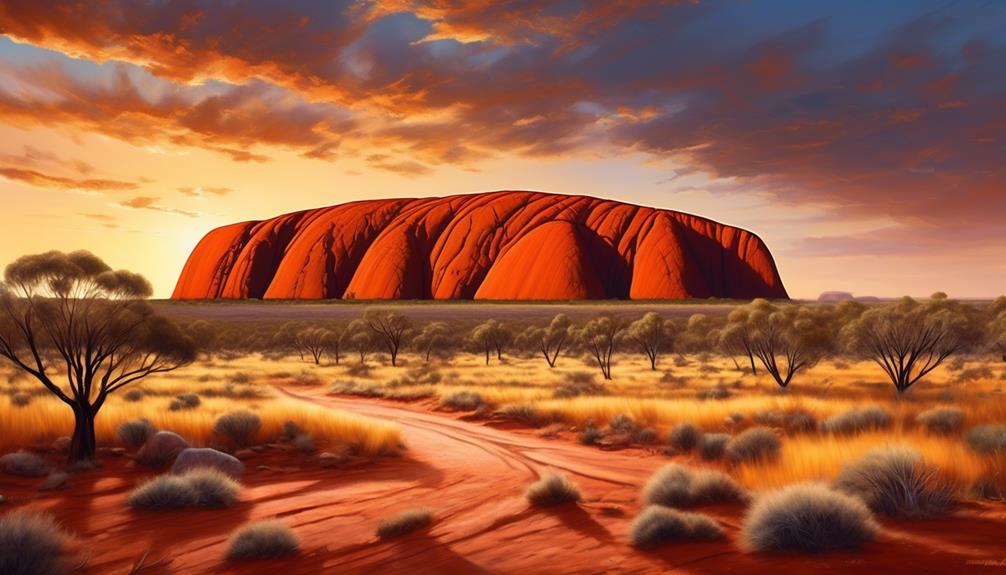
We believe it's important to recognize the traditional beliefs and cultural significance of sacred sites for Australia's Aboriginal people. These sites hold deep spiritual and historical value for the community, and their preservation is crucial for maintaining the integrity of Aboriginal culture and identity.
Understanding the perspectives of the Aboriginal community is vital in ensuring that these sacred sites are respected and protected for future generations.
Traditional Beliefs
Embedded within the rich cultural tapestry of the Aboriginal community are traditional beliefs that have been passed down through generations, shaping our spiritual and philosophical outlook on the world.
Dreamtime stories, which are narratives of creation and spiritual significance, form the cornerstone of our traditional beliefs. These stories aren't mere myths but are deeply intertwined with our understanding of the land, animals, and ancestral spirits.
Through traditional practices, we honor our connection to the land and our ancestors, seeking to preserve the knowledge and wisdom they imparted. Sacred rituals play a pivotal role in upholding our cultural identity and maintaining a harmonious relationship with the natural world.
Our traditional beliefs aren't static but continue to evolve as we navigate the complexities of the modern world while safeguarding our heritage and cultural preservation.
Cultural Significance
Nestled within the heart of our community, the cultural significance of this sacred site is a testament to the enduring heritage and deep spiritual connections of the Aboriginal people.
Cultural practices and Indigenous traditions are interwoven with every rock and tree, echoing the stories of our ancestors and the wisdom they impart.
The historical significance and traditional values embedded in this site serve as a living museum, preserving the essence of our identity and offering a window into our rich past.
Whether through traditional ceremonies or daily rituals, the site remains a beacon of continuity, shaping our cultural ethos and guiding our way of life.
The sacredness of this place isn't just a relic of the past but a vibrant force that propels our community forward, fostering resilience and harmony.
Tourism and Cultural Awareness
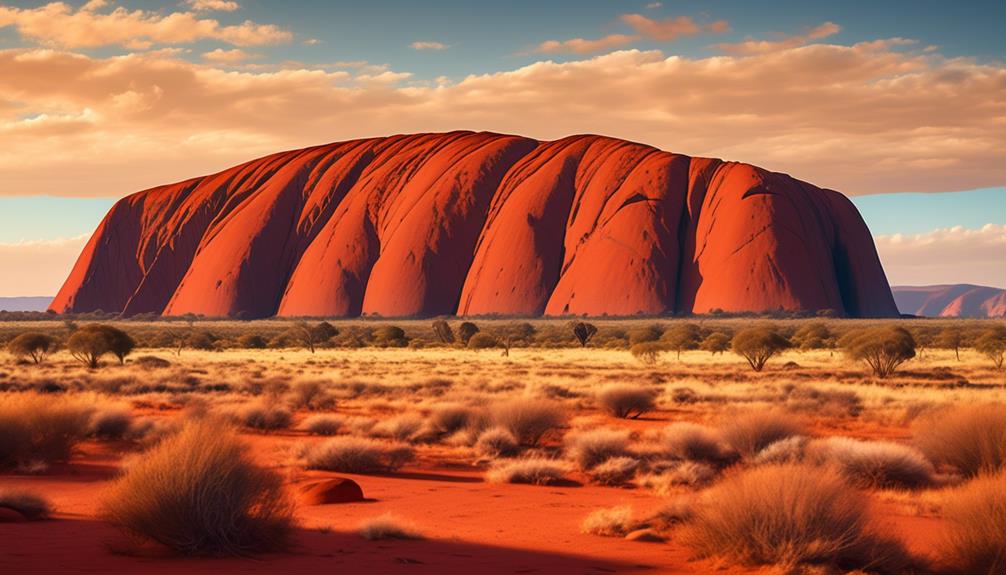
As we consider the significance of tourism and cultural awareness at sacred Aboriginal sites, it's essential to prioritize cultural sensitivity. Understanding the deep spiritual and cultural significance of these sites to the Aboriginal people is crucial for respectful engagement with these spaces.
Moreover, promoting indigenous cultural education and fostering a deeper understanding of the historical and present-day experiences of Australia's Aboriginal communities is integral to sustainable and responsible tourism practices.
Cultural Sensitivity in Tourism
When visiting culturally significant sites, it's essential to approach with deep respect and understanding of the traditions and customs of the indigenous people. Engaging in cultural exchange through tourism should prioritize ethical tourism practices.
Here are some important considerations when visiting indigenous sites:
- Respectful Behavior
- Always follow the guidance of local guides and elders, adhering to any cultural protocols or restrictions.
- Be mindful of your impact on the environment and the community, leaving no trace of your visit.
Aboriginal Sacred Sites
Understanding the significance of Aboriginal sacred sites is integral to our commitment to ethical tourism practices and cultural exchange, reflecting a deep respect for the traditions and customs of indigenous peoples.
These sacred sites hold immense cultural and spiritual importance, often being the locations where ritual ceremonies are performed and where Dreamtime stories are told. These sites aren't just physical spaces; they're deeply intertwined with the spiritual and cultural identity of Aboriginal communities.
They're repositories of history, holding the stories of creation, ancestral beings, and the laws that govern Aboriginal life. Visiting these sites offers an opportunity to engage with the living culture and traditions of the Aboriginal people, fostering a deeper understanding and appreciation of their rich heritage.
It's crucial to approach these sites with reverence and respect, acknowledging their profound significance in Aboriginal culture.
Indigenous Cultural Education
Engaging with indigenous cultural education in tourism and cultural awareness enriches our understanding of the deep-rooted traditions and customs of Aboriginal communities.
- Cultural immersion
Participating in cultural immersion programs allows us to experience firsthand the rich heritage and daily life of Aboriginal people, fostering a deep appreciation for their way of life.
Engaging with indigenous storytelling provides valuable insights into the history, beliefs, and struggles of Aboriginal communities, promoting empathy and understanding.
- Traditional practices
Learning about traditional practices, such as bush tucker and hunting techniques, offers a glimpse into the sustainable and resourceful ways of Aboriginal life.
Supporting cultural preservation efforts through tourism initiatives helps to safeguard and revitalize age-old customs, ensuring their legacy for future generations.
Frequently Asked Questions
How Can Non-Indigenous People Visit Uluru and Respect Its Sacred Significance to the Aboriginal People?
Responsible tourism involves respecting Uluru's sacred significance to Aboriginal people. Cultural sensitivity is key when visiting this iconic site. Before visiting, it's crucial to educate ourselves about the cultural and spiritual importance of Uluru to the Anangu people.
We must adhere to the guidelines set by the traditional owners, such as refraining from climbing the rock. By approaching the site with reverence and understanding, we can honor its significance to the Aboriginal community.
Are There Any Specific Rituals or Ceremonies That Take Place at Uluru That Tourists Should Be Aware Of?
At Uluru, cultural sensitivity is crucial. Traditional practices, including ceremonies and rituals, are sacred to the Anangu people.
Tourist education about Indigenous customs is vital. Visitors should be aware of the significance of certain locations and respect the protocols.
It's essential to approach the area with reverence and understanding, as this is a place of deep spiritual and cultural importance for the Aboriginal people.
What Efforts Are Being Made to Involve the Local Aboriginal Community in the Management and Preservation of Uluru?
Local engagement and cultural sensitivity are key in managing and preserving Uluru. Efforts include involving the local Aboriginal community in decision-making processes, respecting their traditional knowledge, and supporting economic opportunities.
Are There Any Specific Stories or Legends Associated With Uluru That Have Been Passed Down Through Generations?
Stories, traditions, and legends are deeply ingrained in the cultural significance of Uluru for Australia's Aboriginal people. Oral history has passed down the rich tapestry of narratives associated with this sacred site through generations.
These stories hold immense spiritual and traditional importance, connecting the people to their land and ancestors. The enduring legacy of Uluru's legends continues to be a source of pride, identity, and reverence for the Aboriginal community.
How Does the Australian Government Support the Conservation and Preservation of Uluru as a Sacred Site for the Aboriginal People?
The Australian government supports the conservation and preservation of Uluru as a sacred site for the Aboriginal people through various measures.
Government support includes funding for cultural preservation efforts and the implementation of policies that promote respectful visitation and indigenous tourism.
These efforts aim to ensure that the site is protected while allowing visitors to experience its significance in a respectful and sustainable manner.
This approach is essential for preserving the cultural and spiritual value of Uluru.
Conclusion
In conclusion, Uluru holds a special place in the hearts of Australia's Aboriginal people as a sacred site, a connection to their ancient history, and a symbol of their cultural identity.
It's a place of spiritual significance, rich with legends and traditions.
As visitors, we must approach this landmark with respect and understanding, honoring the deep connection that the Aboriginal community has to this iconic geographic feature.
Let's embrace the opportunity to learn and appreciate the cultural significance of Uluru.
